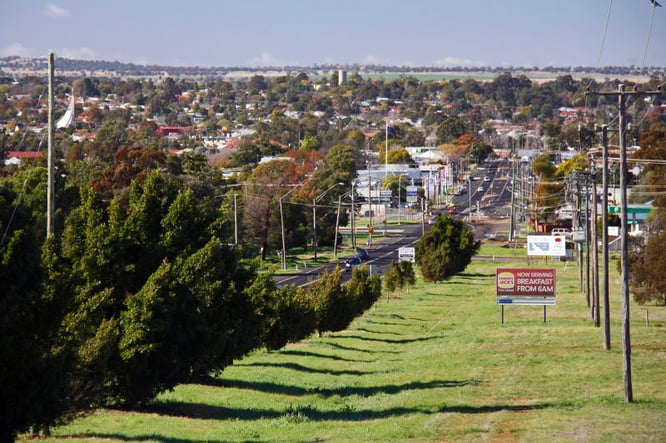 Regional Australia presents a range of vibrant, eclectic opportunities for active property investors.
Regional Australia presents a range of vibrant, eclectic opportunities for active property investors.
With 6.45 million people living outside of Australia’s 20 largest urban centres, the demand for properties in regional and rural areas is alive and kicking. Regional Australia is a property investment goldmine, which only needs a bit of digging to uncover the wealth.
The major attraction of investing in regional centres is obviously the lower cost entry point and subsequently lower median sale prices, which overall, can be half of that in cities and major centres.
However, surprisingly, rental yields are often equal and sometimes higher.
A quick snapshot example:
Warwick, Qld – median sale price $242,000, median gross yield 5.6%
Glen Innes, NSW – median sale price $189,000, median gross yield 6.3%
Seymour, Vic – median sale price 217,000, median gross yield 6.0%
Corelogic, April 22, 2016
Admittedly, capital growth in regional towns is a rare commodity, mostly due to stagnant or even reducing populations, but the astute investor can uncover opportunities through purposeful research and tenacity.
There are many towns and communities that are unsuitable for investment, but there are many that tick many of the right boxes.
The greatest psychological barrier that many must overcome before investing regionally is the perception of value, distance and risk.
The first response at the mention of regional Australia is a comparison to the city. The towns may not be as attractive and modern as a city or larger centre, have less facilities, older architecture, and not as “hip”. Heck, there may be only one coffee shop in town and no Maccas!
Inspecting prospective properties will probably involve a lot of travel, to and from the region, and conducting exhaustive research can be very time consuming due to the tyranny of distance.
Then we have the hyped-up publicity, which always focuses on the bad news and rarely on the good news. For example, of every region in Australia, a recent report on a long-running current affairs show focused on a mining centre in Queensland where housing prices had plummeted as a result of local mines closing down.
But regardless of potentially poor aesthetics, being a long way from home, and lack of x-factor, the numbers can still stack up.
So, if you have stared down these obstacles and emerged with a renewed determination to invest in regional Australia, what is your next steps? What are the type of indicators that will point you to a profitable investment?
Federal and State infrastructure
What clouds are to rain, so Federal and State public infrastructure is to population growth. One typically comes before another.
While local government infrastructure typically follows population growth, large scale infrastructure at the Federal and State level, such as new roads, railways defence contracts and the building of transport hubs, often precede population growth. There are various government websites available that outline future infrastructure plans, complete with timelines and expenditure that has been already committed.
Economic indicators
Taking the indicator of current or future population growth a step further, finding median household income and its trends will determine the level of income available for future growth and housing.
Also look at business start-ups, particularly larger brands selling food, clothing or other essentials. Increased business activity means a stronger local economy.
It is important to understand what business drives the economy of a township. Your risk will be reduced by investing in a town where there are more than one dominant industry or business. If one business is the sole reason a township exists, obviously the risk is higher.
Also be wary of townships supported mainly by tourism, as occupancy can be affected greatly by the inevitable peaks and troughs inherent to that industry.
Overall, when it comes to economic indicators, it is timing that is the most important factor. For this reason, rather than look at statistics in a snapshot of time, it is wise to form opinions based on trends over the five to 10 year period.
Real estate-specific indicators
The important real estate indicators available online and in local papers will always guide the astute investor, particularly trends over 12 months, five and 10 years.
Auction clearance rates: Calculated by dividing the total number of properties sold at auction for the week (including those sold before or after) from the total number of auctions reported. A figure trending up indicates a strengthening market.
Vendor discounts: Calculated by taking the average of the difference between the original asking price of a property for sale and the eventual sale price. A decreasing rate indicates a strengthening market.
Vacancy rates: Calculated as the percentage of all available rental properties that are vacant or occupied at a particular time. A decreasing rate indicates a stronger rental market.
When compared to city dwellings, property in a lot of regional centres is ridiculously affordable, but it takes a focused mind and often getting your hands dirty to separate the suitable investment property from the unsuitable.
With capital growth a rarity, most will not suit those investors looking for short-to-medium term capital growth, but rather for longer-term investment strategies. Buying property in regional centres also offers the chance of diversification for those who may already have properties in cities.